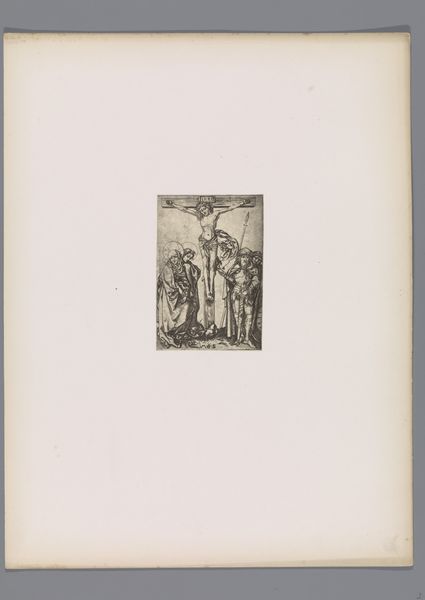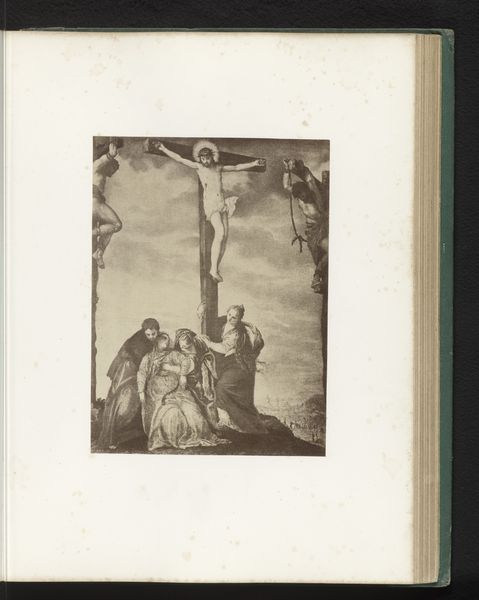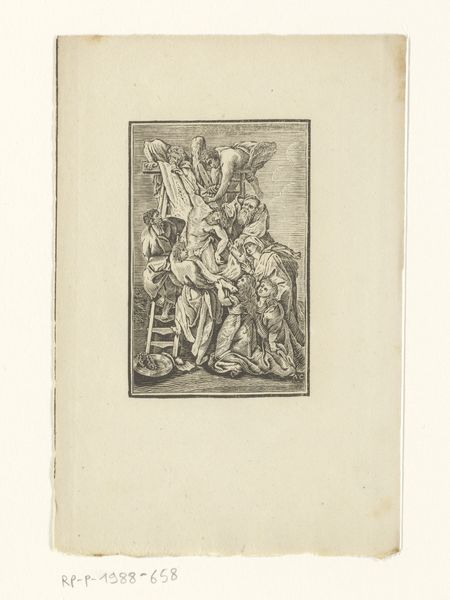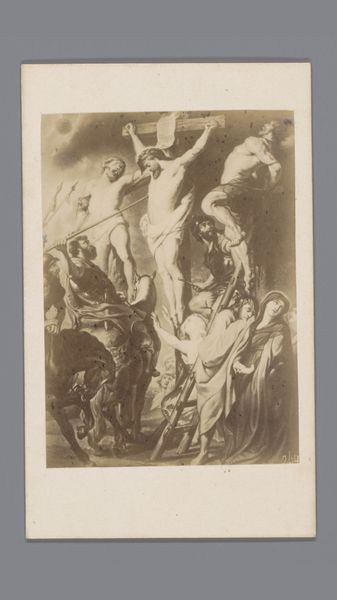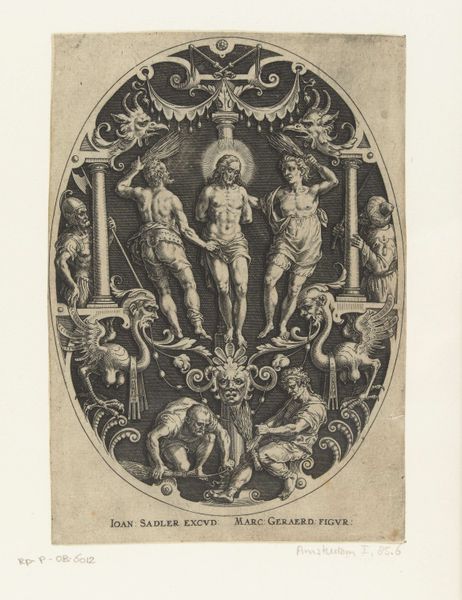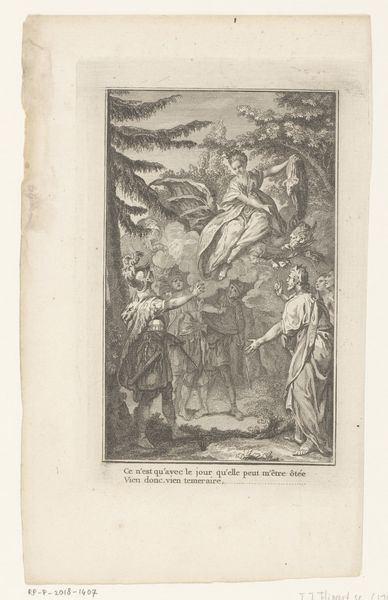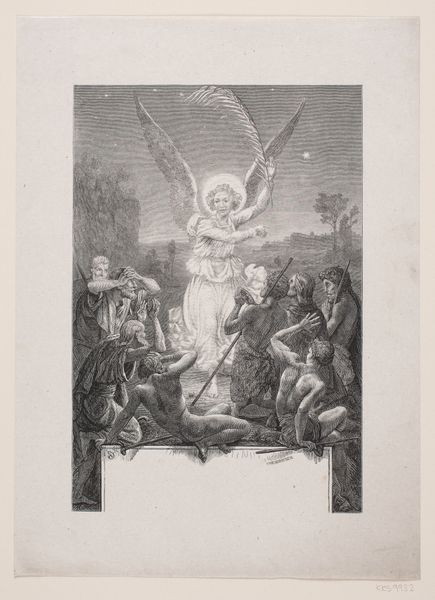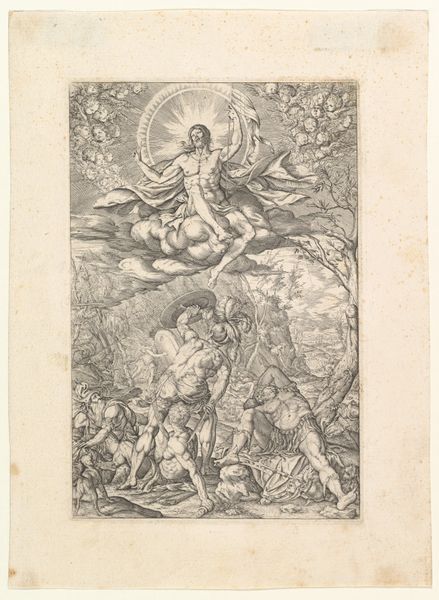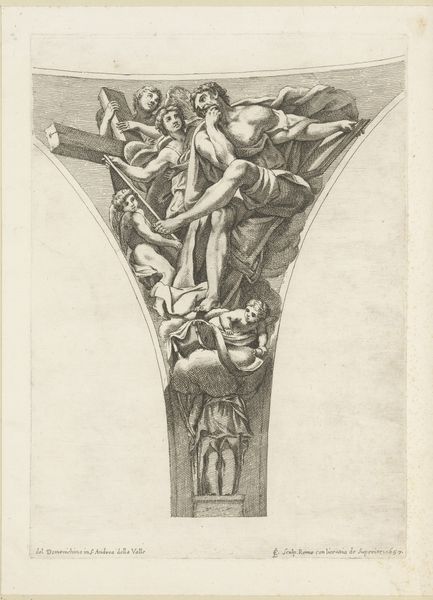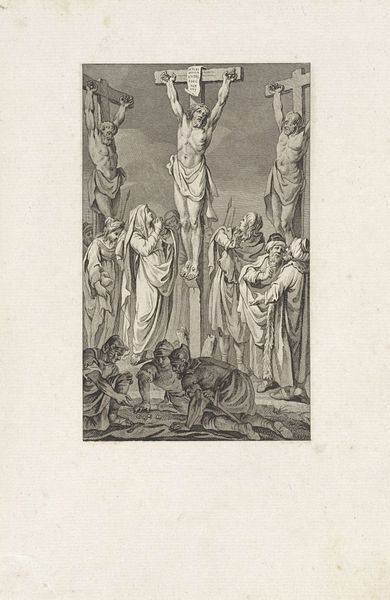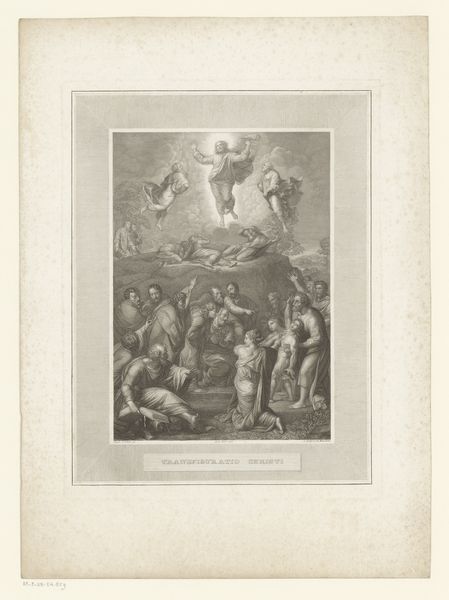
print, engraving
# print
#
landscape
#
figuration
#
genre-painting
#
history-painting
#
engraving
Dimensions: height 164 mm, width 103 mm
Copyright: Rijks Museum: Open Domain
Curator: This is an engraving called "Christus aan het kruis," dating from between 1850 and 1900, by the Monogrammist AC. It depicts the crucifixion scene, a somber image created using the meticulous technique of engraving. What strikes you most about it? Editor: I’m struck by how the artist uses such fine lines to create so much detail in a relatively small image, giving the piece a unique and fragile character. Considering its subject matter, what were the social implications of producing and consuming prints like these back then? Curator: Well, let’s think about the engraving process. It’s labor intensive, requiring a skilled artisan. The reproductive nature of printmaking allowed for wider dissemination of religious imagery beyond the elite, bringing sacred stories into the homes of the emerging middle class. Who was able to buy the raw materials, like the metal plate and ink? And more fundamentally, whose labour went into production? Editor: So, access to these images wasn’t just about faith; it was also about class and the means of production. Curator: Exactly! The act of reproducing this image connects to a wider network of workshops, commerce, and consumption. Religious imagery becomes a commodity, shaping social and religious identities. The paper, the ink, the skill of the engraver—these all contribute to understanding the piece beyond just its subject. What’s also crucial is this engraving bridges both high and low art as religious iconography and genre painting. Does examining it in this light affect your first impressions? Editor: Definitely! It goes beyond simply the religious narrative. It highlights the role of the artist and the material processes that made the distribution of the iconography possible. Now I look at it less as a holy icon and more as an artifact embedded in the economics and production standards of its time. Curator: Precisely! Understanding the materiality transforms our appreciation of its historical and social context.
Comments
No comments
Be the first to comment and join the conversation on the ultimate creative platform.

